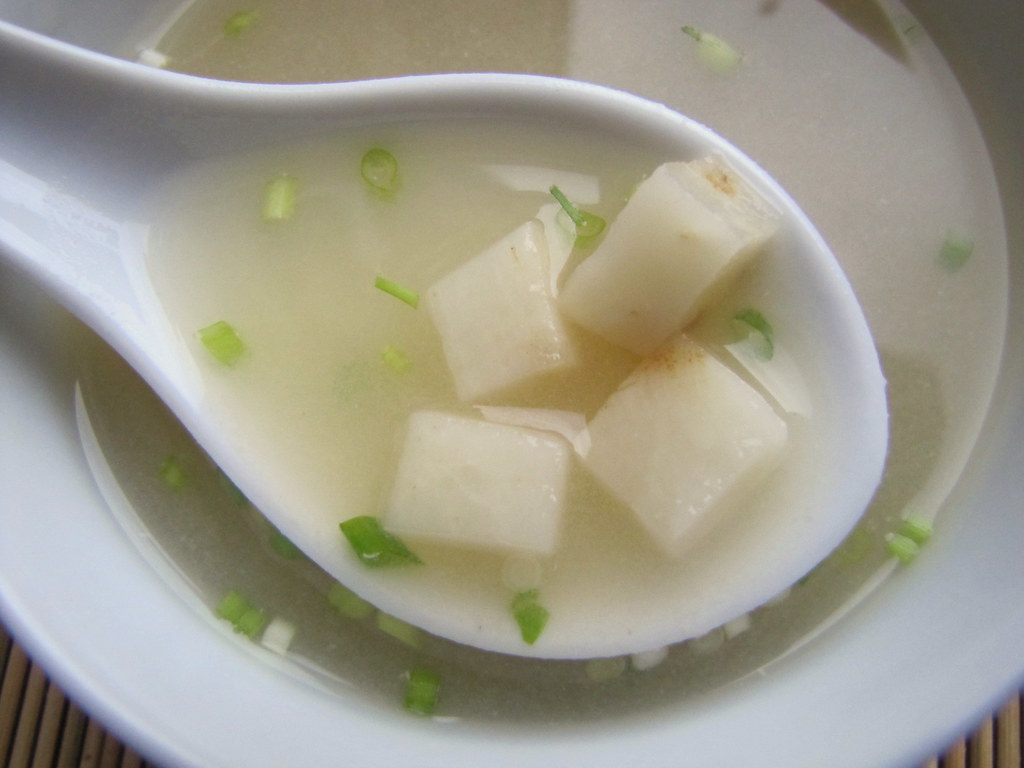
I do love a good fool. Not the kind that walks on two legs (or tries to), but a gag, a practical joke, and especially when it has to do with food. Like translucent off-white cubes of soft-cooked celeriac instead of tofu bobbing in an otherwise traditional miso soup. It’s a culinary deception, and I think it’s in good faith because the soup is still delicious, despite it all.
Why celeriac? That’s celery root, simply put. It’s a crisp root vegetable that needs to be cooked before it can be enjoyed, and one of the most underutilized ways of doing this, in my estimation, is by boiling it plain and simple. In its short heyday, which is still happening, the root tends to be roasted more so than anything else. There’s roasted, then mashed celeriac soups and purees, roasted root vegetable medleys with celeriac and shredded sautees. I love roasting this root, and many other things, as it brings out its sugars and more intense, concentrated flavor. But for a soup as savory as miso with dashi stock, a delicate touch of celery flavor seemed fitting.
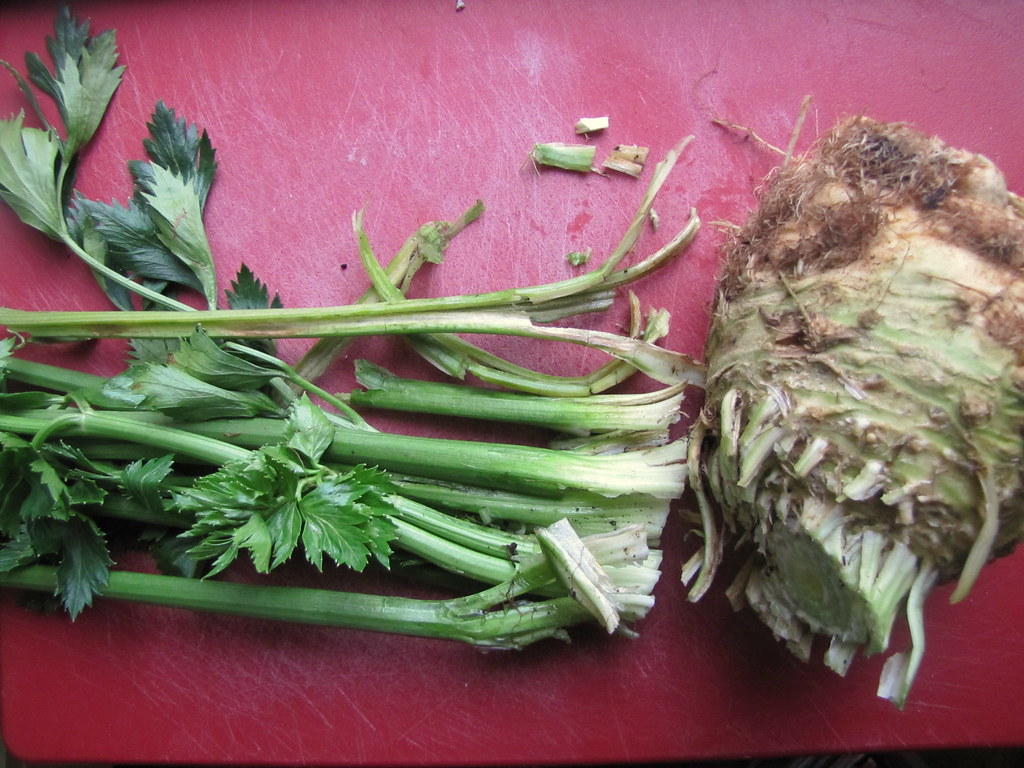 celery stalks are trimmed from the root
celery stalks are trimmed from the root
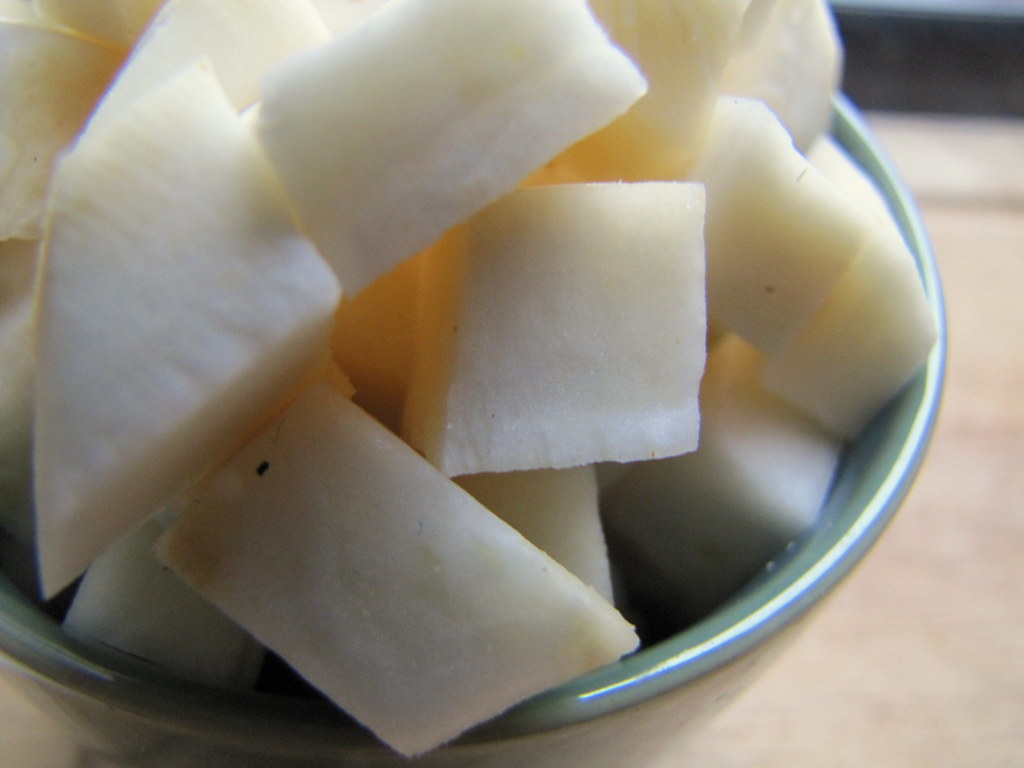 the root is chopped to cubes
the root is chopped to cubes
First note about celeriac, and one you’ll commonly hear: it’s ugly. It’s a warbled, wispy, impossibly dirty bulb that grows beneath the earth, unlike the stalks that bask in the sun. In comparison, the two parts of the celery plant are like a flock of fairies and an ogre. It’s not every day you’ll find them still attached, but at D&J Organic Farm’s stand at the Greenmarket last Friday, I did, and picked one up for $2, together. The stalks weren’t much of a score, I’m afraid to say; these veggies are generally grown in the best interest of one or the other: the stalks or the root. These were clearly cultivated for the root. The stalks were gangly and very fibrous, but the root was very large, and once trimmed of its tough skin, fragrant, pale and more juicy than most I’ve seen.
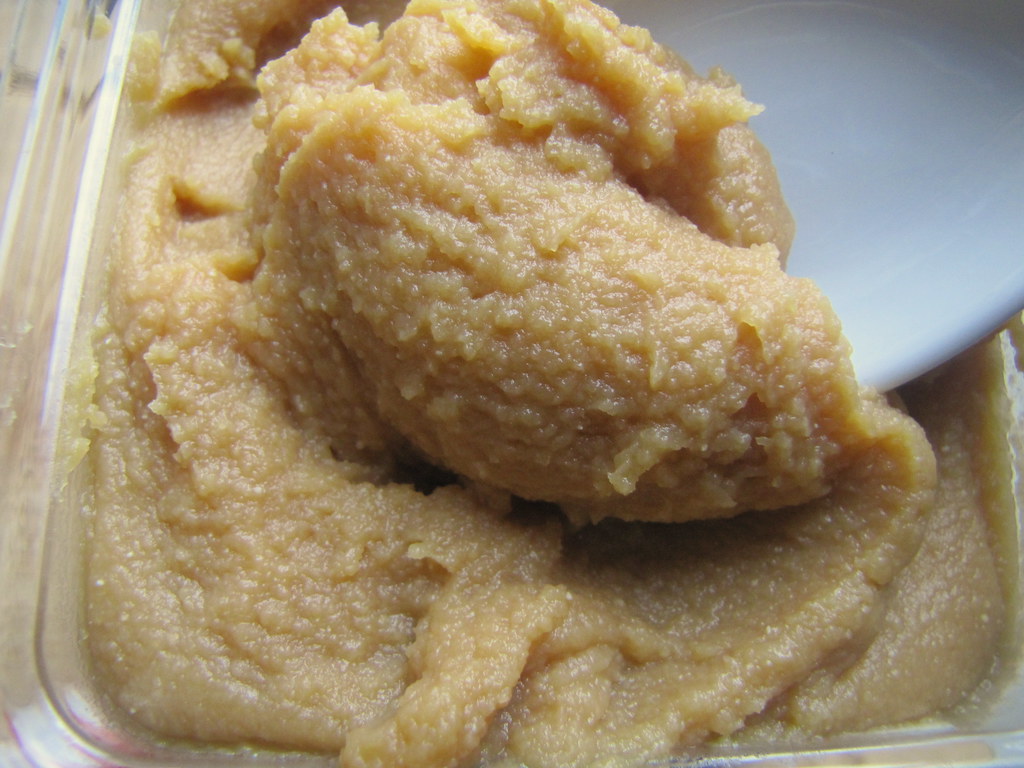
white miso
Miso soup is a Japanese take-out staple, but it’s devastatingly simple to make at home. You just have to have a few ingredients on hand — thankfully ones that can keep in your kitchen for a while, too. Dried kelp called kombu is what anchors the stock. Called dashi or “sea stock,” it’s the quintessential soup base in Japanese cuisine. You dunk a chunk of dried kombu into a pot of water, let it sit. Then bring it to a boil, and let it sit a while more. Add a sprinkle of smoked fish flakes also known as bonita in Japanese; then drain it all and you have a lightly pungent broth — ta-da!
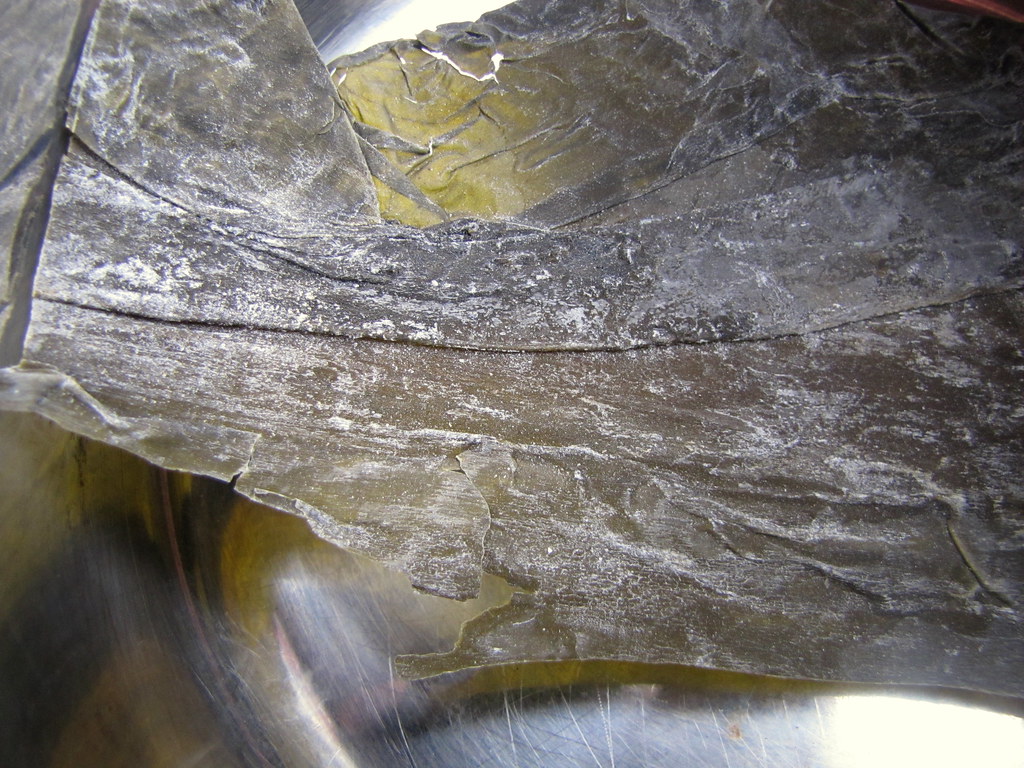 kombu (dried kelp) awaits water at the bottom of a pot
kombu (dried kelp) awaits water at the bottom of a pot
 bonita flakes, for flavoring and sometimes garnish
bonita flakes, for flavoring and sometimes garnish
The next part, turning this broth into miso soup, is so simple you’ll never want to order it again. Pick up a tub of white miso, in the refrigerated section. The fermented soybean and grain paste is so potent and distinct you’ll only need to stir in a spoonful. One friend of mine loves it so much he can eat it straight, with a spoon (yeesh — salty!!). And where do you get this stuff? At any Japanese or Asian grocery store. There’s nothing else that looks like kombu, bonita and miso so you shouldn’t have too much trouble finding them, even if you can’t read the labels. Just remember that kombu is thick and plasticky-feeling rather than thin and papery, like the roasted seaweed sheets, nori.
Then the really kitschy part, which is not part of this recipe, but another dose of deception with food: at a recent Hapa Kitchen dinner, we served up our version of the seafood stew bouilliabasse. But instead of cooking chunks of actual seafood in it, we cut dolphin and other animal shapes out of konnyaku, the jelly-like Japanese yam cake. These swam about in the miso-dashi broth. It was completely Akiko’s idea, to be sure. The other chunky addition, the cooked-in celeriac cubes, was a collaboration of minds. Or, perhaps it was mostly Mark’s, our Whisk & Ladle Supper Club co-chef and host for that night, who had originally wanted to make a creamy celeriac soup. So we had celery root to spare, and decided to toss them in, to resemble tofu cubes. It worked. We had to explain this dish a million times to the diners. It was also topped with a fancy assemblage of nori seaweed chiffonades.
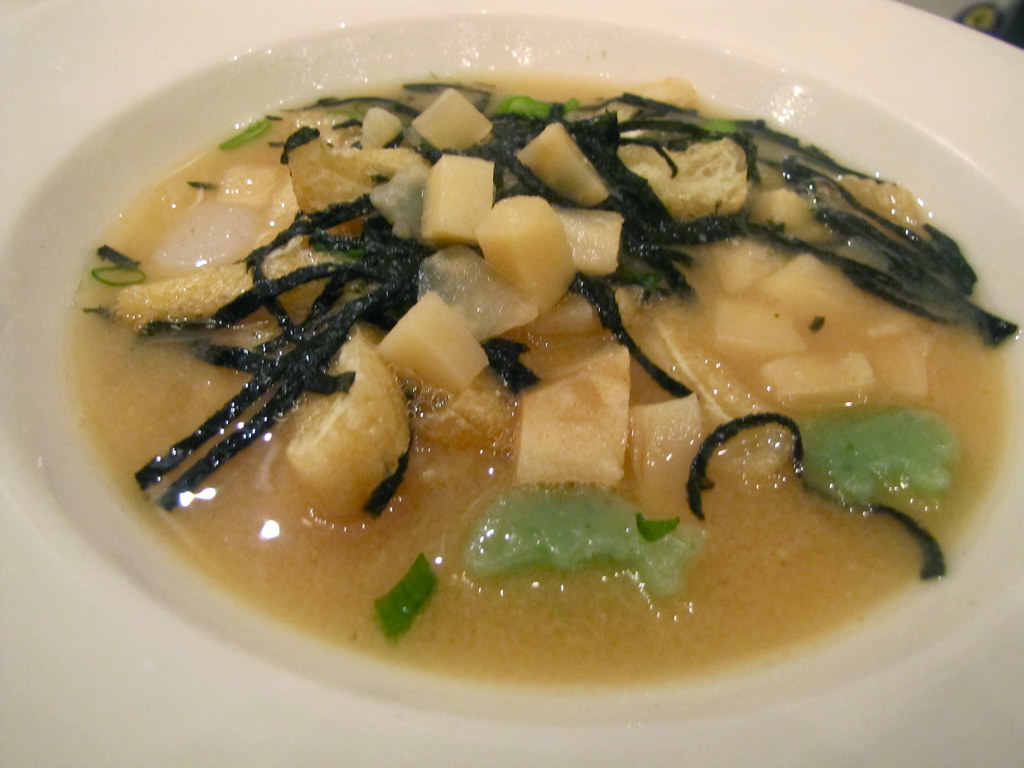 the Hapa Kitchen’s “bouilliabaisse” — another kitchen deceit
the Hapa Kitchen’s “bouilliabaisse” — another kitchen deceit
I liked this soup so much that I went home and made it again, this time with just celeriac to see how it tasted, alone. It was every bit as good as I hoped, and I hope you can enjoy it now, too. Celery root, I think I’m turning you Japanese.
(makes 6-8 servings)
about 20 square inches kombu
about 1/4 cup packed bonita flakes
about 1 lb celeriac, trimmed of tough skin and chopped to roughly 1/2-inch cubes
2 tablespoons white miso
chopped scallions for garnish
(for 6-8 servings)
1/4 cup bonita (from a package for $3): $0.60
1 lb celeriac (at $2/large bulb): $1.50
1 scallion: $0.25
Four maple leaves: Celeriac is freshly dug from the dirt this time of the year so it’s a great farm stand purchase, for being so fresh and tasty. The rest of the soup’s flavoring ingredients were hardly local, imported from Asia, but kelp and seaweed in general is ridiculously plentiful worldwide and yet hardly eaten throughout Western cuisine, for the most part.
2 Responses
Kitchen Butterfly
I hate Celery but Celeriac is not half bad at all….as I discovered this weekend when I tried it for the first time ever. Celeriac and potato mash, Celeriac and potato soup with carrots and bacon and Celeriac and Apple remoulade with toast and salt-baked sardines. Definitely an autumn keeper!
Melissa Danielle
What a great idea!
I hate tofu but love miso soup.
Thank you!